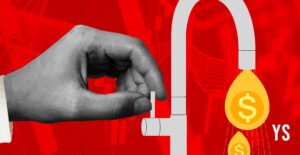
Coca-Cola India is making a notable entry into the alcoholic beverage market in India by introducing Lemon-Dou, a lime-flavored cocktail. This initiative is a part of Coca-Cola’s broader strategy to diversify its product portfolio, traditionally known for non-alcoholic beverages.
Lemon-Dou, which originated in Japan and is a blend of shochu and lime flavor, is currently undergoing pilot testing in select regions like Goa and parts of Maharashtra. The pricing for the test launch in India is set at Rs. 230 for a 250 ml can.
This move into the alcoholic beverage sector aligns with Coca-Cola’s global vision of becoming a “total beverages company,” catering to a wide range of consumer preferences. Lemon-Dou was first introduced in Japan in 2018 and is also available in other countries such as China and the Philippines.
Coca-Cola’s approach to entering the Indian alcoholic beverage market is cautious, recognizing the complexities of large-scale alcohol distribution and manufacturing in India, a sector known for its heavy regulation and taxation, with state-specific pricing controls.
The company’s global strategy in the alcoholic beverage domain is not limited to Lemon-Dou. It includes a collaboration with Pernod Ricard for launching “Absolut & Sprite,” a pre-mixed cocktail, in 2024 in various countries. Additionally, Coca-Cola has been exploring different products in the alcohol market, including seltzers and other pre-mixed cocktails, in various global markets.
The alcoholic beverage market in India is rapidly growing, with a valuation of $52.4 billion in 2021, which is about 2% of the nation’s GDP. This market is projected to expand to $64 billion in the next five years and reach approximately $111,238.9 million by 2033. There are notable regional differences in alcohol consumption across India, with some states showing higher consumption rates.


![Read more about the article [Exclusive] Courier fulfilment startup NimbusPost in final stages of raising $25M from XpressBees](https://blog.digitalsevaa.com/wp-content/uploads/2024/01/CopyofImageTaggingnoframesEditorialTeamMaster15-1659072907920-300x150.jpg)
![Read more about the article [Funding alert] Mamaearth raises $52M led by Sequoia at $1.2B valuation](https://blog.digitalsevaa.com/wp-content/uploads/2022/01/Imageqanx-1589042485564-300x150.jpg)






![Read more about the article [Funding alert] boAt raises Rs 50 Cr from Qualcomm Ventures to power Make in India plans](https://blog.digitalsevaa.com/wp-content/uploads/2021/04/Imagerzt7-1609857746834-300x150.jpg)